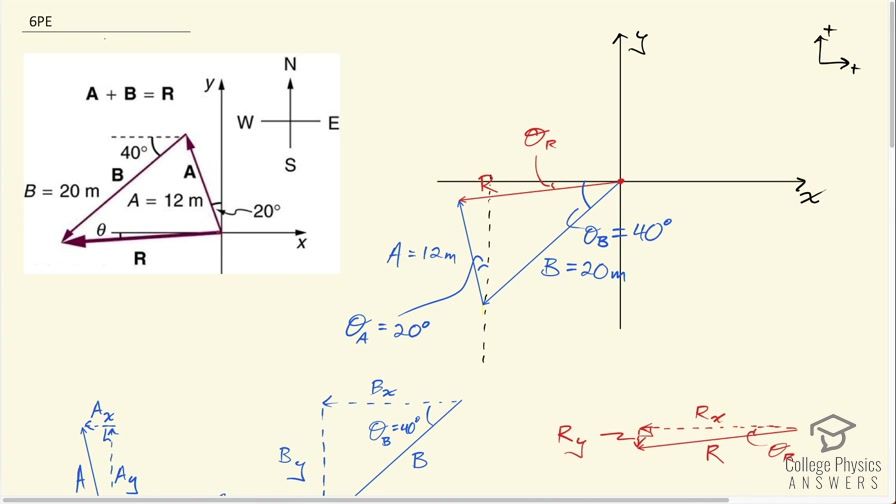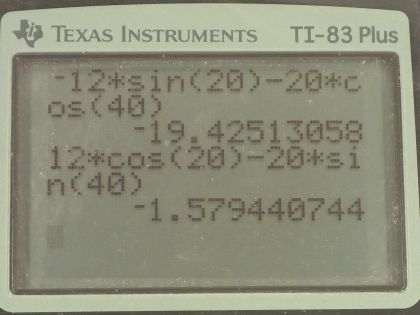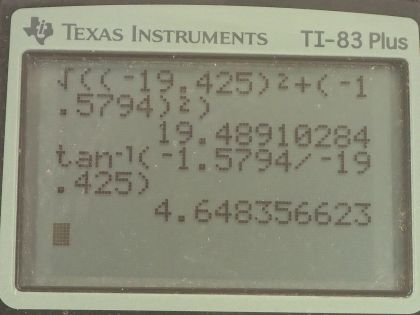
Solution video
OpenStax College Physics, Chapter 3, Problem 6 (Problems & Exercises)

Calculator Screenshots
Comments
when finding Rx why is it not -12m for Ax? The arrow is pointing to the left.
Hi propiak,
Thank you very much for noticing this. You're quite right that should be negative, and the same is true for . It turns out to not affect the final answer since, when finding the magnitude of the resultant, we square the components of the resultant so the negative sign doesn't matter. Where is might have mattered is in finding the angle, but I ended up changing the sign of from negative to a positive so that divided by was positive. This was justified by looking at the picture, and thinking only about the magnitudes of the components, then specifying direction at the end based on the picture. Looking at the drawing is what informed direction rather than using the signs to give direction. Admittedly, the signs were important for finding since the y-components of and are in opposite directions and there needs to be subtraction to find . I can see why this is confusing, and I'll flag this video for a re-do some day, but I hope with these comments that it makes enough sense in the mean time to help.
All the best,
Shaun
This video was updated on Nov. 2nd, 2023



